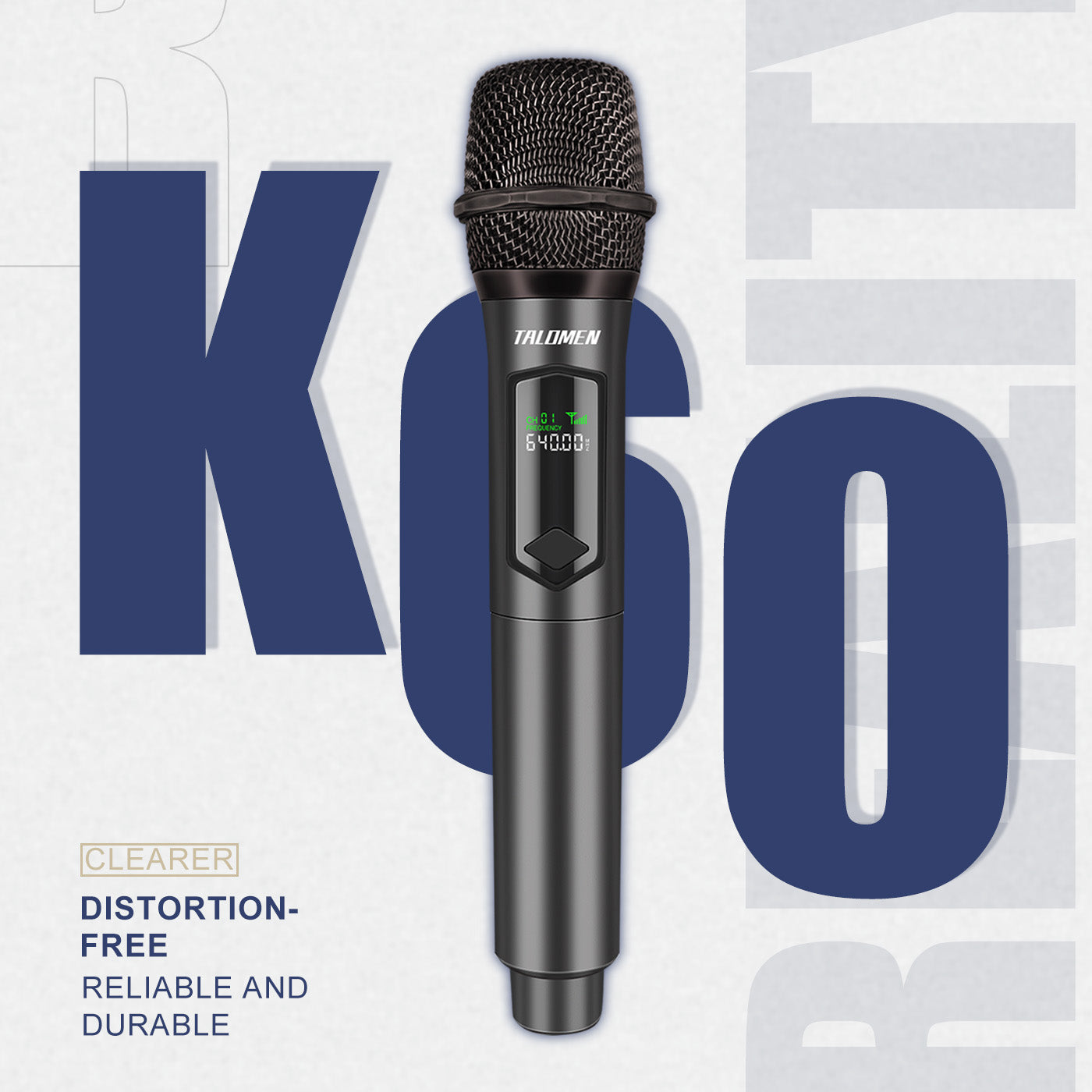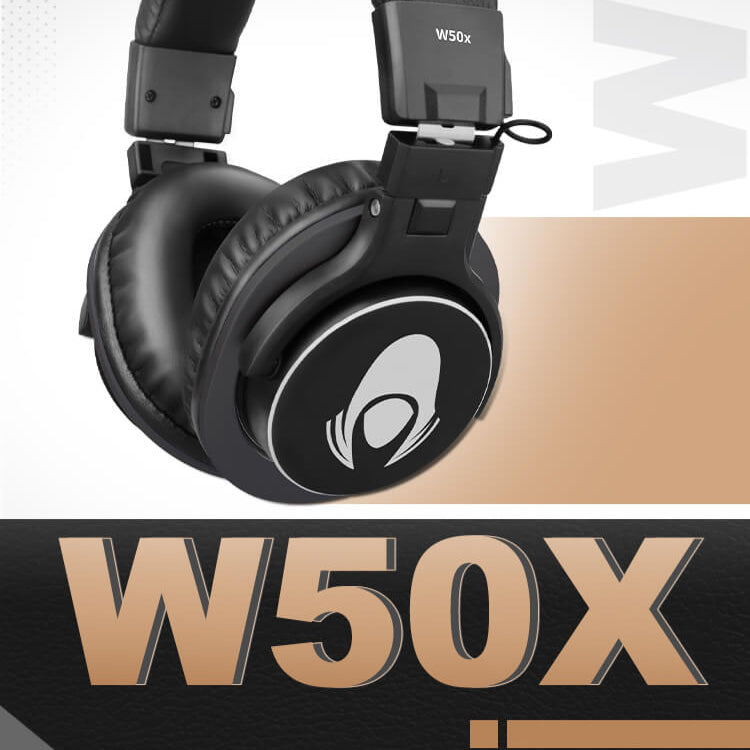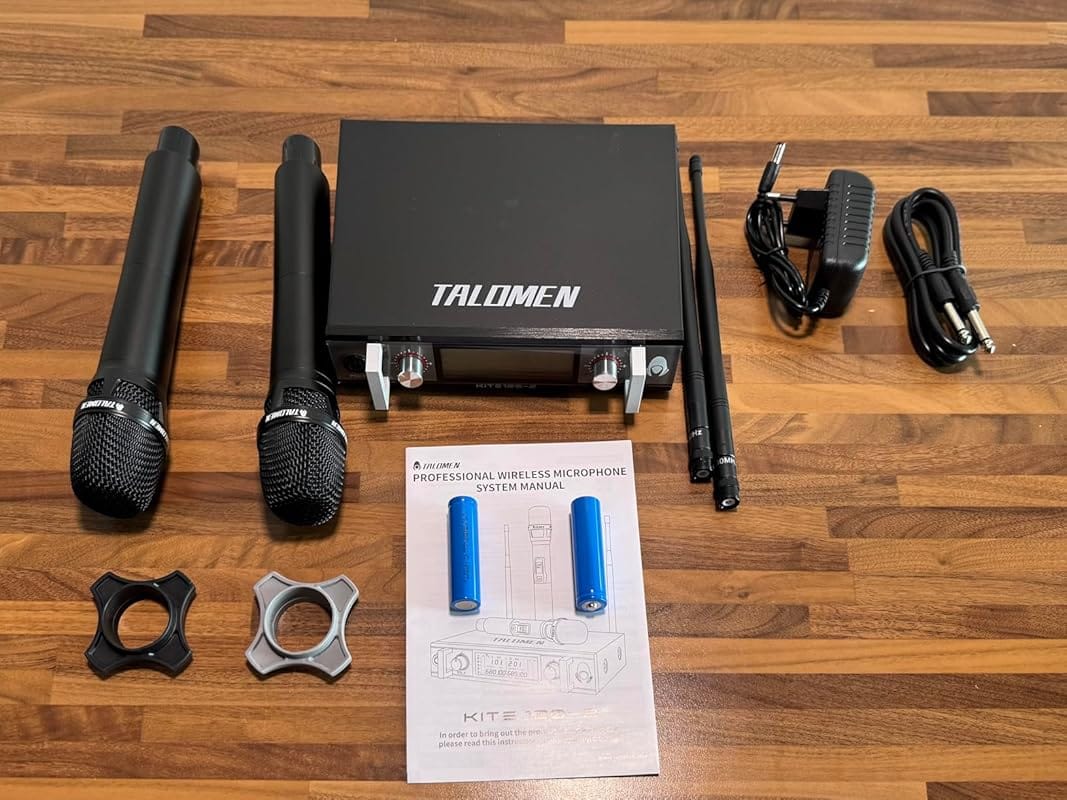When choosing a wireless microphone system, one of the biggest questions is: Should I go for UHF or VHF? These two frequency bands define how your audio is transmitted wirelessly — and they can make a major difference in performance, clarity, and reliability. In this guide, we’ll break down how both systems work and why UHF wireless microphones like the Talomen K120 have become the go-to choice for professionals and creators.
1. How Wireless Microphones Work
A wireless microphone transmits your voice or instrument sound through radio frequencies rather than a cable. The transmitter inside the mic sends the signal to a receiver, which then delivers the sound to your speaker, mixer, or camera. The frequency band used — VHF (Very High Frequency) or UHF (Ultra High Frequency) — determines how stable and clear that transmission will be.
2. What Is VHF and How It Works
VHF wireless microphones operate between 30 MHz and 300 MHz, most commonly within 174–216 MHz. They are an older technology and still used for entry-level wireless systems. While VHF can offer decent sound in small indoor environments, it is more vulnerable to interference from TV channels, FM radio, and other electronics. Its shorter range and less stable signal make it less ideal for professional use.
3. What Is UHF and Why It’s More Reliable
UHF wireless microphones work in the 470–698 MHz range, providing stronger signal stability, longer transmission distance, and less interference. This makes UHF the preferred choice for live performances, churches, events, and home studio recording. UHF also supports more simultaneous channels, allowing multiple microphones to operate without cross-talk.
4. UHF vs VHF — The Key Differences
The table below provides a clear comparison between UHF and VHF wireless microphone systems:
| Feature | UHF Wireless Microphones | VHF Wireless Microphones |
|---|---|---|
| Signal Stability / Interference Resistance | Excellent — less interference, stable even in complex environments | Moderate — prone to interference from TVs, radios, and other devices |
| Transmission Range / Penetration | Long-range performance up to 393 ft (120 m), up to 656 ft (200 m) in open space | Limited range, weaker through walls or obstacles |
| Sound Quality | High-fidelity sound with clear detail and strong dynamics | Good for casual use, but less detail and weaker bass response |
| Multiple System Compatibility | Up to 15 sets (30 microphones) can work simultaneously | Usually limited to a few sets before interference occurs |
| Cost | Affordable professional-grade — excellent value for the performance | Cheaper, but with notable performance compromises |
5. Why Modern Performers Choose the Talomen K120 UHF Wireless Microphone System
The Talomen K120 is a dual-channel UHF wireless microphone system designed for singers, presenters, and content creators who need both power and flexibility. It includes two premium handheld microphones and a stylish receiver available in black or white. Each channel features an independent gain knob, so you can fine-tune your volume precisely for any situation.
Using advanced IR synchronization and PLL frequency technology, the K120 delivers exceptionally stable and long-distance wireless performance. The recommended operating range is up to 393 ft (120 m), and field tests show it can maintain a strong connection up to 656 ft (200 m) in open areas — making it perfect for stage use, churches, and outdoor events.
Each microphone features a solid metal mesh head and body for durability and a polished, elegant look. Inside, a professionally tuned capsule captures vocals with remarkable clarity, warmth, and fullness — ideal for both speech and singing. Each mic supports 15 selectable frequencies, allowing up to 15 sets (30 microphones) to be used simultaneously without interference.
The K120 system includes rechargeable batteries that last up to 9 hours per charge, ensuring consistent performance through long sessions or live shows. Whether you’re building a home studio or performing on stage, the Talomen K120 offers professional-grade wireless freedom and reliability.
6. Choosing the Right Wireless Microphone for You
If you only need a microphone for casual karaoke or small meetings, a VHF model might be enough. But if you want professional sound quality, stable signal transmission, and flexible channel control, a UHF system like the Talomen K120 is the smarter choice.
What makes it even better is its excellent price-performance ratio — the K120 offers the stability of high-end UHF systems without being significantly more expensive than many VHF models. Plus, the Talomen online store often runs special promotions and discounts, making it one of the best-value wireless systems you can buy.
7. Final Thoughts
Between UHF and VHF wireless microphones, UHF stands out as the modern standard. With its superior range, signal stability, and sound accuracy, it’s ideal for professionals and enthusiasts alike. Systems like the Talomen K120 combine innovative technology and sleek design, proving that reliable wireless audio can be both powerful and affordable.
Want to learn more about wireless mic technology? Explore our related guide on Different Types of Wireless Microphones.





Leave a comment
This site is protected by hCaptcha and the hCaptcha Privacy Policy and Terms of Service apply.